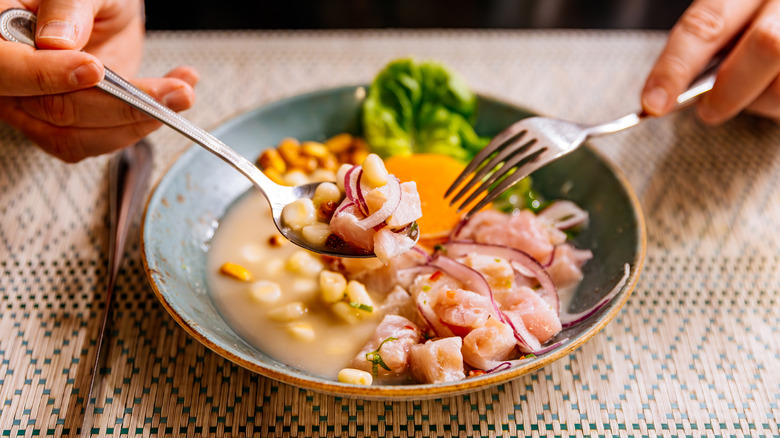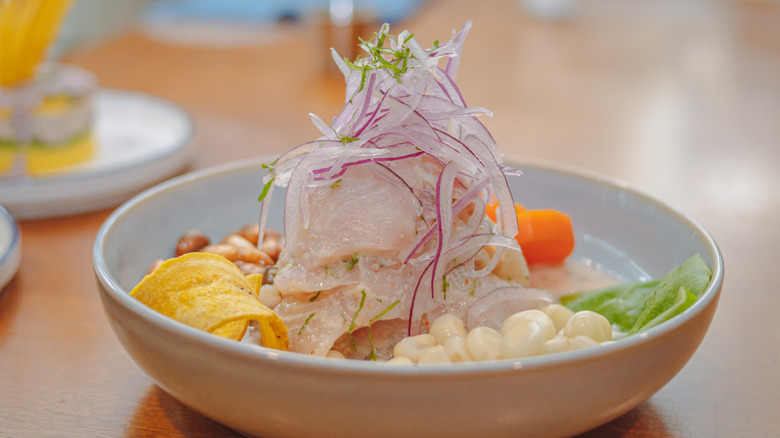The History Of Ceviche Dates Back Longer Than You May Think
Few dishes showcase seafood in zesty and vibrant style quite like ceviche. By using the unique culinary method of cooking fish in citrus juice, the resultant dish turns out not quite raw, but nonetheless retains delectable freshness. It's a culinary method employed all across the Pacific coast of Central and South America, with major differences between Peruvian and Mexican styles, as well as other renditions.
Ceviche's rich cultural history traces back centuries. A dish of such resemblance goes as far as 3,000 years ago, when fishermen cured freshly caught fish with chilies. It's believed the practice emerged in the Northern Peruvian coast, around the modern town of Huanchaco, which is still known for its ceviche. However, the first versions of this dish look different from the modern form.
Citrus was only introduced to the New World after the arrival of Columbus, so it's believed the acid of peppers was used to cure the fish instead. During the later Moche civilization in the same region, some suggest the tumbo — a root similar to passion fruit — was introduced for extra tartness, too. And all the while, seaweed was used as an aromatic enhancement. What's remained constant is the approach to the dish: a low-intervention approach that lets fresh fish shine.
Ceviche combined influences over thousands of years
From its centuries old roots in Peru, ceviche has absorbed varying influences into its modern form. After the initial inclusion of spicy chilies and seaweed, first came the Moche civilization who are believed to have added the passion fruit-like tumbo. This root's acidity takes longer to firm up the flesh; a sign that the duration of marinating ceviche likely increased.
The next modifications came by way of the Incas, who took over the region in the 15th century. Maize was one of the prominent crops of the empire. So, accordingly, fermented corn became integrated into the dish, with boiled versions of the vegetable still included in Peruvian recipes. Furthermore, the Inca's lent the dish the name siwichi, which later transformed into today's ceviche.
The subsequent period of ceviche transformation occurred with the arrival of the Europeans. They introduced both onions and citrus, now fundamental ingredients in the dish. Limes became cultivated locally, and turned into a Peruvian cultivar with an especially strong acidity. Plus, a garnish of cilantro was added to the dish, too.
The final influence came by way of Japanese immigrants, who arrived in Peru during the 19th century. Upheld by the sashimi style of fish consumption, they erased marination time altogether, thereby creating the spin-off tiradito. Further fusion of Japanese and Peruvian techniques elaborated into Nikkei — now one of the most beloved cuisines in the South American nation. Aided by such popularity, ceviche became a modern classic.

